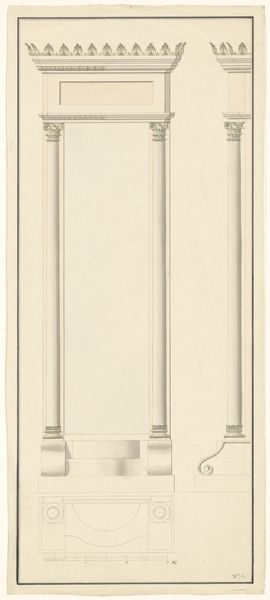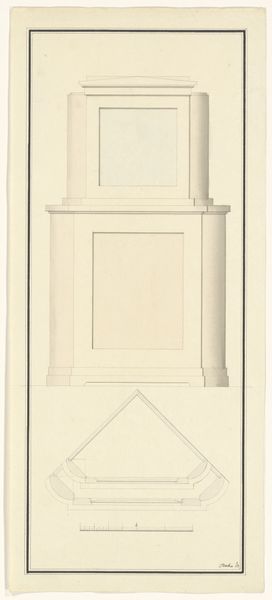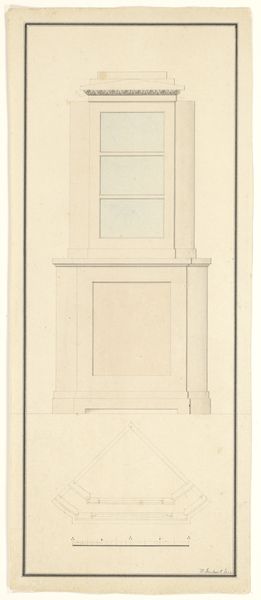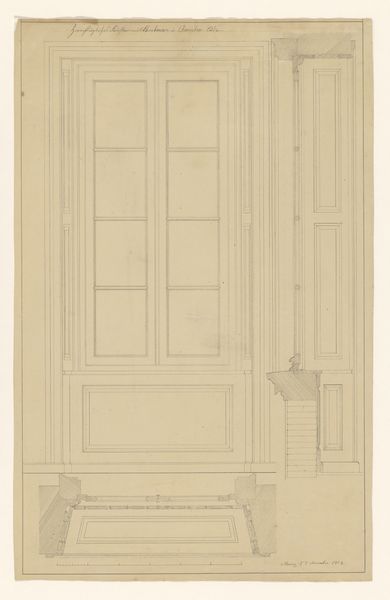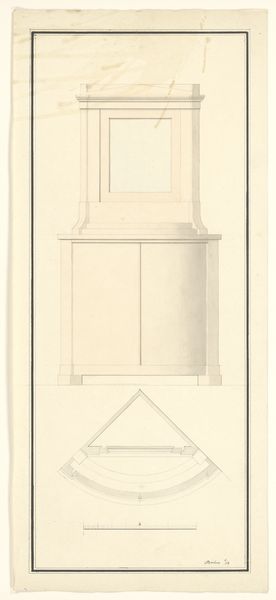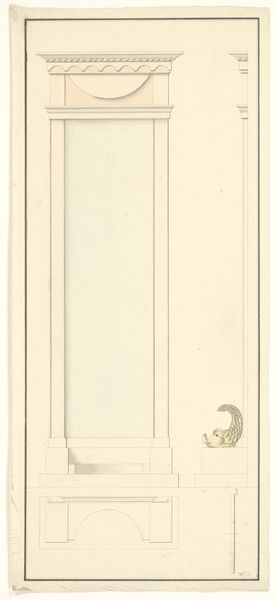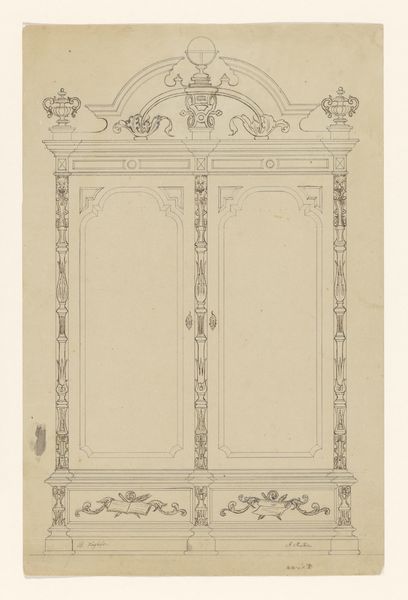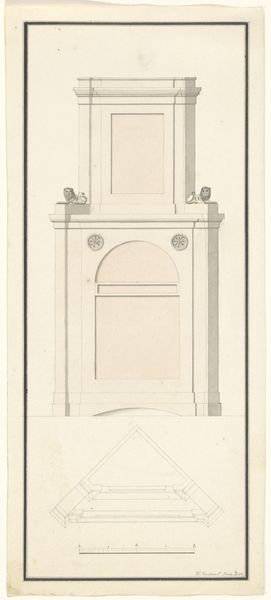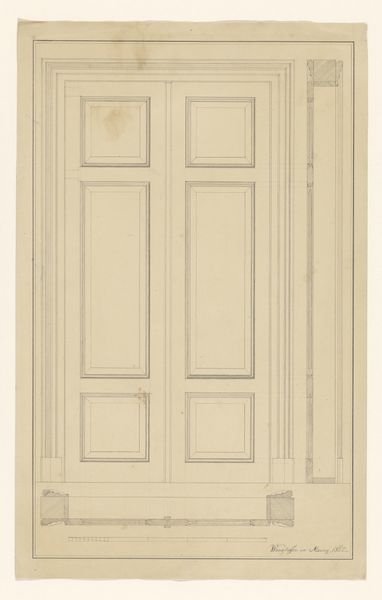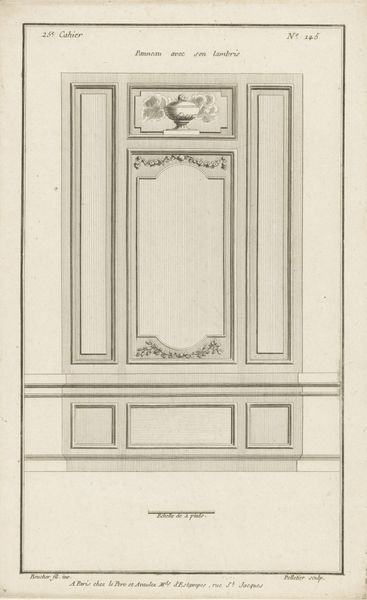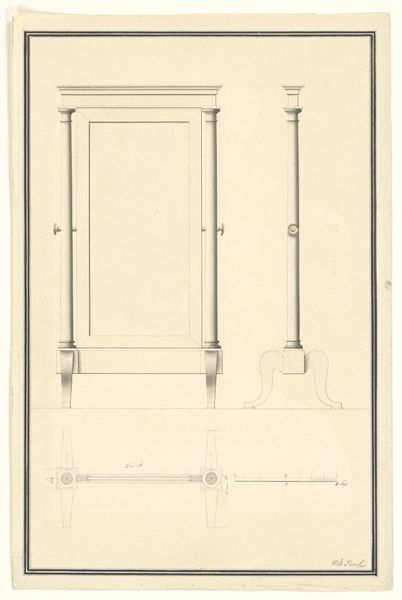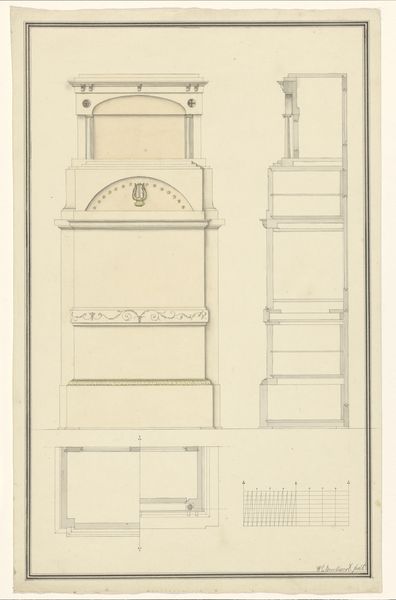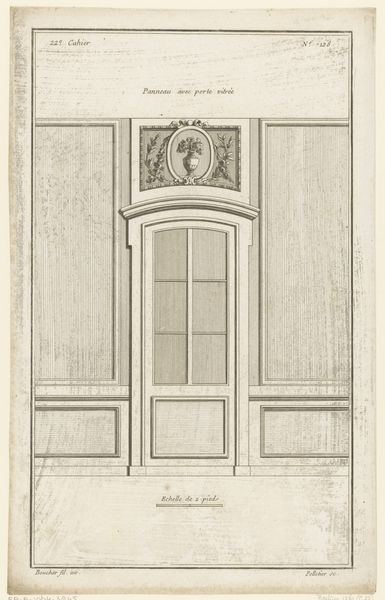
#
aged paper
#
toned paper
#
homemade paper
#
parchment
#
tea stained
#
nude colour palette
#
warm toned
#
warm-toned
#
neutral brown palette
#
golden font
Dimensions: height 409 mm, width 180 mm
Copyright: Rijks Museum: Open Domain
Curator: This is an intriguing drawing by Carl Wilhelm Marckwort, titled "Ontwerp voor een spiegeltrumeau," created around 1820-1823. Editor: The paper has a really delicate, aged feel, and I appreciate the precision in rendering the architectural elements. What was a 'spiegeltrumeau' even used for in the context of its creation? Curator: A trumeau is essentially a pier glass—a mirror designed to fit in the space between windows. They were popular elements of interior decoration. Looking at the drawing, you can see classical columns framing the mirror's position. The rendering showcases meticulous line work, typical of architectural design studies during the Neoclassical era, indicating its reliance on geometric precision for social affirmation. Editor: Given that interior spaces during that period often reflected specific socio-economic narratives, the integration of the 'spiegeltrumeau' into the household wasn't merely functional but deeply symbolic of class and gender performances. Were these designed specifically for particular sites or mass produced? Curator: Although each one could be individualized based on commission or taste, many architectural design elements became standardized in pattern books to assist cabinet makers in fabrication. It speaks to an early form of design standardization catering to aspirational markets and increased interior decoration—a burgeoning culture of production. The materials too—paper, ink, the possibility of paint or gilding—all played into crafting this perception of opulence. Editor: Thinking about where such an item was positioned allows me to read this sketch differently: How does its location, specifically a place where personal appearances were rehearsed, emphasize certain expectations around self-fashioning at the time, especially for women? Curator: That's a pertinent reading! The mirror, in that light, goes beyond reflecting mere appearances. It embodies a complex cultural interplay defining societal standards for feminine presentation and the resources to perform them, so, effectively this simple sketch helps unpack social mores about class and gender. Editor: Yes, the very act of meticulously crafting oneself became a stage performance closely watched and harshly judged. Seeing such precision dedicated to something that seems utilitarian emphasizes just how enmeshed even the most functional objects were in systems of power. Curator: Indeed. Examining Marckwort's design makes one consider all the human effort embedded not just in the creation, but in the very social function of the object it prefigures. Editor: I think that contextualizing it this way brings out just how this drawing enables dialogue across disciplines, and periods!
Comments
No comments
Be the first to comment and join the conversation on the ultimate creative platform.
